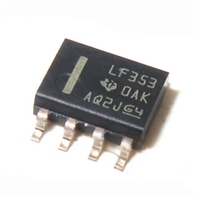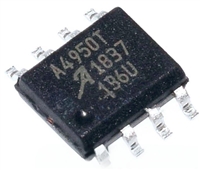ATA6560/1
1.1.2
SILENT MODE (ONLY FOR THE
ATA6560)
1.2.2
INTERNAL PULL-UP STRUCTURE
AT TXD, NSIL, AND STBY INPUT
PINS
A low level on the NSIL pin (available on pin 5) and on
the STBY pin selects the Silent mode. This
receive-only mode can be used to test the connection
of the bus medium. In the Silent mode, the ATA6560
can still receive data from the bus, but the transmitter is
disabled and therefore no data can be sent to the CAN
bus. The bus pins are released to recessive state. All
other IC functions, including the HSC, continue to oper-
ate as they do in the Normal mode. The Silent mode
can be used to prevent a faulty CAN controller from
disrupting all network communications.
The TXD, STBY, and NSIL pins have an internal pull-up
to VIO. This ensures a safe, defined state in case one
or all of these pins are left floating. Pull-up currents flow
in these pins in all states, meaning all pins should be in
a high state during the Standby mode to minimize the
current consumption.
1.2.3
UNDERVOLTAGE DETECTION ON
PINS VCC AND VIO
If VVCC or VVIO drops below their respective undervoltage
detection levels (Vuvd(VCC) and Vuvd(VIO), see Section 2.0
“Electrical Characteristics”), the transceiver switches
off and disengages from the bus until VVCC and VVIO have
recovered. The low-power WUC is only switched off
during a VCC or VIO undervoltage. The logic state of the
STBY pin is ignored until the VCC voltage or the VIO
voltage has recovered.
1.1.3
STANDBY MODE
A high level on the STBY pin selects the Standby
mode. In this mode, the transceiver cannot transmit or
correctly receive data via the bus lines. The transmitter
and the HSC are switched off to reduce current con-
sumption, and only the low-power Wake-Up Compara-
tor (WUC) monitors the bus lines for a valid wake-up
signal. A signal change on the bus from “Recessive” to
“Dominant,” followed by a dominant state longer than
twake, switches the RXD pin to low to signal a wake-up
request to the microcontroller.
1.2.4
BUS WAKE-UP TIME-OUT
FUNCTION
In the Standby mode, a bus wake-up time-out timer is
started when the CAN bus changes from recessive to
dominant state. If the dominant state on the bus persists
for longer than tto_bus, the RXD pin is switched to high.
This function prevents a clamped dominant bus (due to a
bus short circuit or a failure in one of the other nodes on
the network) from generating a permanent wake-up
request. The bus wake-up time-out timer is reset when
the CAN bus changes from dominant to recessive state.
In the Standby mode, the bus lines are biased to
ground to reduce current consumption to a minimum.
The WUC monitors the bus lines for a valid wake-up
signal. When the RXD pin switches to low to signal a
wake-up request, a transition to the Normal mode is not
triggered until the microcontroller forces back the STBY
pin to low. A bus dominant time-out timer prevents the
device from generating a permanent wake-up request
by switching the RXD pin to high.
1.2.5
OVERTEMPERATURE PROTECTION
For ATA6560 only: If the NSIL input pin is set to low in
the Standby mode, the internal pull-up resistor causes
an additional quiescent current from VIO to GND.
Microchip recommends setting the NSIL pin to high in
the Standby mode.
The output drivers are protected against overtemperature
conditions. If the junction temperature exceeds the
shutdown junction temperature, TJsd, the output drivers
are disabled until the junction temperature drops below
TJsd and pin TXD is at a high level again. The TXD
condition ensures that output driver oscillations due to
temperature drift are avoided.
1.2
Fail-Safe Features
1.2.1
TXD DOMINANT TIME-OUT
FUNCTION
A TXD dominant time-out timer is started when the
TXD pin is set to low. If the low state on the TXD pin
persists for longer than tto(dom)TXD, the transmitter is
disabled, releasing the bus lines to a recessive state.
This function prevents a hardware failure, software
application failure, or both from driving the bus lines to
a permanent dominant state (blocking all network
communications). The TXD dominant time-out timer is
reset when the TXD pin is set to high (≥ 4 µs).
DS20005991A-page 6
2018 Microchip Technology Inc.






 NTC热敏电阻与PTC热敏电阻的应用原理及应用范围
NTC热敏电阻与PTC热敏电阻的应用原理及应用范围

 GTO与普通晶闸管相比为什么可以自关断?为什么普通晶闸管不能呢?从GTO原理、应用范围带你了解原因及推荐型号
GTO与普通晶闸管相比为什么可以自关断?为什么普通晶闸管不能呢?从GTO原理、应用范围带你了解原因及推荐型号

 LF353数据手册解读:特性、应用、封装、引脚说明、电气参数及替换型号推荐
LF353数据手册解读:特性、应用、封装、引脚说明、电气参数及替换型号推荐

 A4950资料手册解读:特性、应用、封装、引脚功能、电气参数及代换型号
A4950资料手册解读:特性、应用、封装、引脚功能、电气参数及代换型号
